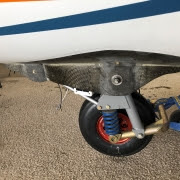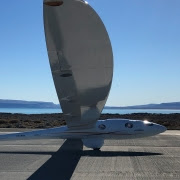The award-winning Airbus Perlan Mission II – a nonprofit organization made up of volunteer pilots, engineers and scientists – is developing soaring technologies and testing stratospheric air launch operations to study weather patterns and atmospheric chemistry with the goal of improving flights.

Attaining its first world record in 2006 at 50,722 feet with a non-pressurized sailplane (Perlan 1), the pressurized (Airbus) Perlan 2 sailplane (first flown in 2015) reached new heights on Sept. 2, 2018, above Patagonia, Argentina, when this research plane soared to 76,124 feet pressure altitude over the Andes Mountains – becoming the highest manned subsonic airplane flight in history. This flight topped the Lockheed Martin U-2’s record from 1989.
In February 2019, Airbus Perlan Mission II Chief Pilot Jim Payne contacted Michelin with a critical tire issue − the wheel-mounted tire was losing air pressure when exposed to –105-degree Fahrenheit temperatures in the stratosphere. Michelin aviation engineers studied the issue and suggested moving to a tubeless tire with the appropriate load rating for the glider: the MICHELIN AVIATOR. Working with a local tire distributor, Michelin arranged for a set of tires to be shipped, so the plane could conduct test flights.

“The 10-ply Michelin tire was outstanding in El Calafate (Argentina),” said Jim Payne. “We flew six flights above 40,000 feet with the highest being 65,000 feet and never had a flat tire on landing!!”
Michelin aviation engineers were proud to be part of the efforts that solved the issue, so Perlan 2 could continue making record-breaking ascents.


